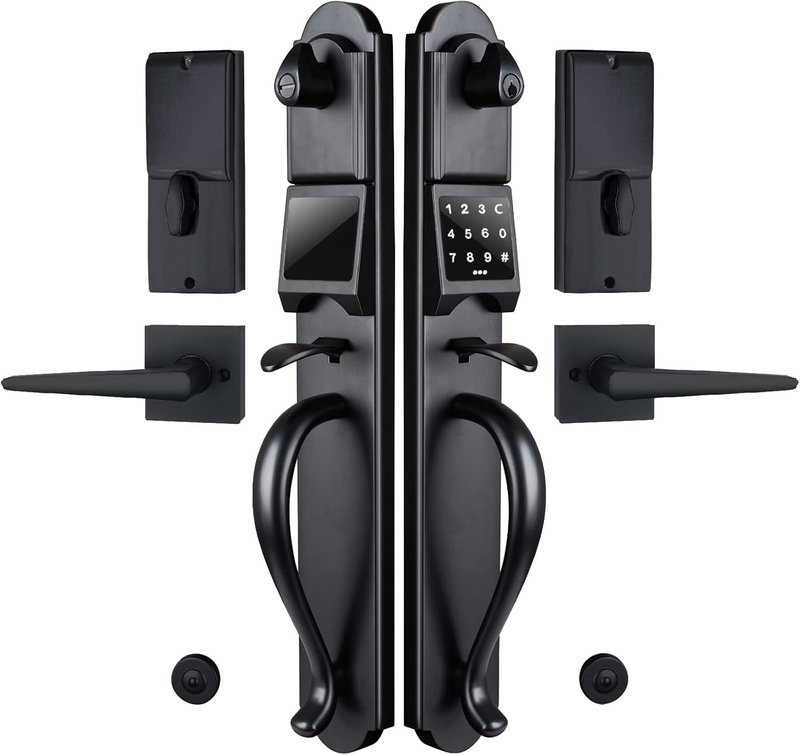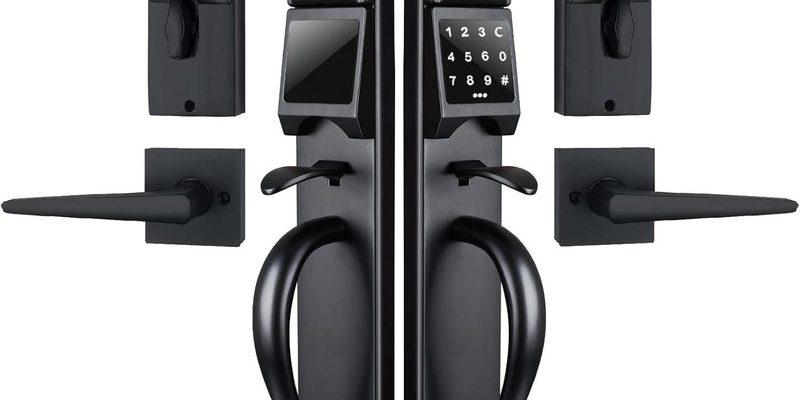
Here’s the thing: handleset keys shouldn’t feel rough when inserting. That roughness is a little SOS from your lock, telling you something’s off inside. It could be dust, debris, worn parts, or even a mismatch between the key and the lock cylinder. Whether you’re troubleshooting a stubborn entrance handle or an old remote key for your car (yes, even remote codes sometimes play a role), the feeling is similar: keys should work smoothly if everything’s set up right.
Let’s unpack why your handleset key might feel rough when inserting, how to fix it, and what you can do to prevent future key-fumbles.
Common Causes of a Rough Handleset Key
If your handleset key drags, catches, or grinds when you insert it, there’s usually a straightforward reason. Most of the time, it comes down to *something* getting between the key and a smooth turn. Dirt, dust, and tiny slivers of metal can build up inside the cylinder over time. Sometimes, worn-out keys or locks start to lose their original shape, making everything fit together awkwardly.
Honestly, think about how many times a day you (or your family) use the front door. Every insert, twist, and pocket-jangle can wear things down. Here are the big culprits:
- Dirt and debris in the cylinder: Over time, dust and grime from pockets or the outdoors settle into the lock.
- Worn or damaged keys: Keys bend, wear down, or pick up nicks, which can snag inside the lock.
- Misaligned lock parts: If the lock was re-keyed incorrectly or installed at an odd angle, things can bind inside.
- Lack of lubrication: Like any mechanical part, locks need a bit of smoothness to keep working well.
If you know your handleset is a brand like Schlage or Kwikset, you might expect them to be tough as nails. They usually are! But even the best brands need a little care now and then.
How Lock Cylinders Work—and Why That Matters
Let me explain how lock cylinders function, because understanding the basics makes troubleshooting a lot less mysterious. Inside most residential handlesets is a pin tumbler mechanism. Picture it like a puzzle: there’s a row of small spring-loaded pins that block the cylinder from turning. When you insert the right key, each notch pushes the pins into perfect alignment, letting the cylinder turn and unlock the door.
But if even a little dirt, metal burr, or mis-cut key tooth gets in the way, that “perfect alignment” gets thrown off. Think of it like trying to solve a jigsaw with crumbs between the pieces—nothing fits quite right. The result? Your key feels rough, refuses to slide in, or even gets stuck.
With remote key systems or electronic locks, the process is digital (codes, batteries, and signals), but even those can develop mechanical sticking points if there’s a physical key backup. Some modern remotes even sync with the mechanical lock, so problems can overlap if things aren’t working smoothly.
If your key’s fighting you, remember: every rough insert is a sign your lock’s trying to tell you something.
Signs That Your Key or Cylinder Needs Attention
You might be wondering: How do I know if it’s really a problem, or just normal wear and tear? Here’s what to watch for:
- Difficulty inserting or removing the key: If it’s not smooth, something’s wrong.
- Visible grime or shavings: Sometimes, you’ll even spot black dust or tiny bits of metal on your key after use.
- Lock “catches” or feels inconsistent: Some days it’s fine, others it’s gritty or sticks. This “on and off” problem usually means debris is shifting around inside.
- The key looks bent or worn: Even a small bend can make a big difference.
If you have multiple keys for the same lock and one works better than the other, compare them side by side. Look for wear, nicks, or any difference in the pattern. For universal or after-market keys, small inaccuracies can cause big headaches. Some brands’ lock tolerances (like Yale or Baldwin) are tighter than others.
How to Fix a Rough Handleset Key
Here’s the step-by-step for smoothing things out—no need for fancy locksmith gear.
- Clean the key: Wipe it down with a soft cloth. If there’s gunk, a little rubbing alcohol can help.
- Lubricate the lock: Use a graphite powder or a lock-specific lubricant (avoid oil-based sprays like WD-40; they attract more dirt over time). Insert the key, work it in and out a few times, and see if things loosen up.
- Check for damage: If the key or lock looks damaged, no amount of cleaning will fix it. You might need to get a new key cut, or, if the problem is with the lock, consider calling a locksmith.
- Test with a spare: If you have a backup key, try it. If it slides in smoothly, your original key is the problem. If both are rough, it’s likely inside the lock.
Don’t force a rough key—if it breaks off inside, you’ll be dealing with a much bigger repair.
When to Replace Your Key, Cylinder, or Handleset
Not every handleset problem can be fixed with a squirt of lubricant. Sometimes, parts have just reached their end. But how do you know when it’s time to swap something out versus another round of troubleshooting?
- Key is obviously bent or damaged: Even small bends can cause sticking. Get a fresh key cut from the original code, not a copy of a worn one.
- Lock cylinder is corroded or heavily worn: If cleaning and lubrication don’t help, or you see lots of metal flakes, the cylinder’s probably shot.
- Handleset is outdated or compromised: Particularly with old or no-name brands, it might be safer (and less frustrating) to update the lock entirely.
Installation matters, too: if you recently replaced your handleset and things felt rough from day one, the lock might have been installed at a bad angle. In these cases, a reset or even a full re-pairing (especially with smart or remote systems) may be required.
Brand Differences: Are Some Handlesets Smoother Than Others?
You might be thinking, “Did I just get a dud?” Not necessarily. Different lock brands have slightly different designs, tolerances, and materials. For example:
- Schlage and Kwikset are known for durability, but Schlage’s keyways are often a bit tighter—which means even a little grime has a bigger impact.
- Baldwin and Yale often use more refined mechanisms, but those can be less forgiving to slightly bent or dirty keys.
- Smart or remote handlesets: Battery-operated and digital locks sometimes override a physical key, but most still have a backup cylinder that operates like a regular lock.
With universal keys or after-market handlesets, quality can be hit-or-miss. Double-check the compatibility and always use keys that match the original code or specs.
Prevention Tips: Keeping Your Handleset Key Smooth
A little prevention goes a long way. Here’s how to keep your keys and lock cylinder working like new:
- Use a key cover: If you carry your key loose with coins or other metal objects, it’ll nick and wear faster.
- Avoid oil-based sprays: Stick to graphite or silicone-based lubricants.
- Clean the lock area regularly: Dust, sand, and pet hair can work their way into outdoor handlesets, especially in windy or high-traffic entrances.
- Replace keys at the first sign of trouble: If the teeth look worn, don’t wait for a total failure. Get a new one cut by a professional, ideally from your original code.
- For smart locks, check the sync and battery regularly: Low batteries or glitches can interfere with the key override or lock memory, sometimes making things feel “off” even with the physical key.
Keeping your handleset in good shape saves you stress—and possibly an emergency call to the locksmith.
When to Call a Locksmith or Professional
Sometimes you’ve tried every trick, but that key still feels rough or unreliable. Here’s when it’s time to get help:
- Key breaks off in the lock: Don’t try fishing it out yourself; you could damage the pins or cylinder.
- Multiple keys stop working: This usually points to a deeper issue with the lock mechanism itself.
- Lock becomes nearly impossible to turn: Forcing it risks complete failure (or getting locked out).
- You suspect tampering or damage: If your lock looks forced or you notice scratches, it’s smart to get it checked and possibly re-keyed.
A good locksmith can also re-key, reset, or upgrade your lock for better security. If your handleset is still under warranty (especially with big brands like Schlage or Kwikset), call their support line for troubleshooting or a replacement.
Key Takeaways for a Smooth Entry
Dealing with a rough handleset key is never fun, but it’s almost always fixable if you catch it early. Staying mindful of dirt, worn keys, and proper lock maintenance keeps your front door experience quick and hassle-free. Whether you’re using a classic deadbolt or a high-tech remote handleset, “smooth is safe”—for both you and your lock’s lifespan.
Next time you feel that gritty resistance, don’t ignore it. Most of these problems can be solved with a little care, the right know-how, and—when necessary—a helping hand from a pro. A little attention now is way easier than a total lockout later.
